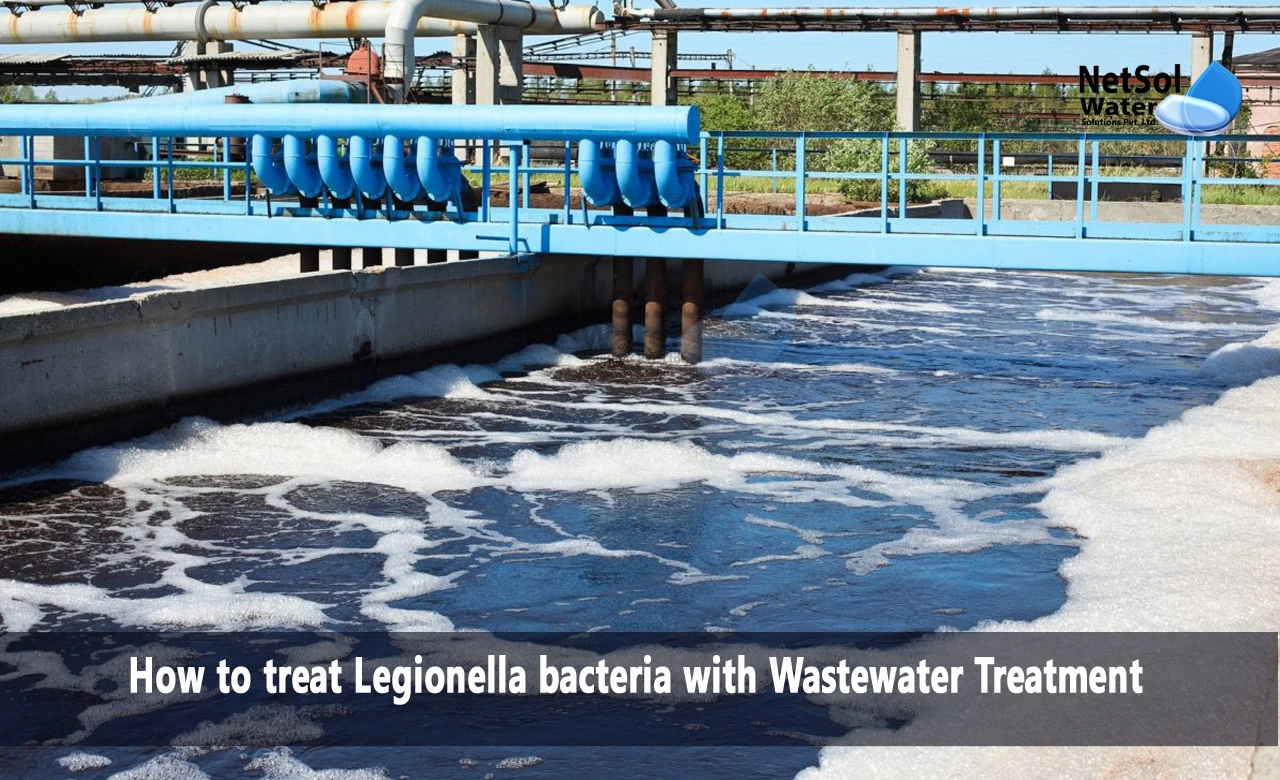How to treat Legionella bacteria with Wastewater Treatment?
Legionella bacteria pose significant public health risks when inadvertently aerosolized in water systems. Legionella is the causative agent of Legionnaires’ disease, a severe form of pneumonia. Outbreaks have been linked to cooling towers, hot tubs, showers, and other aerated devices. With its high organic content and warm temperatures, wastewater offers prime conditions for Legionella growth. Wastewater treatment plants must take proactive measures to control these dangerous bacteria and prevent downstream contamination.
Legionella Ecology in Wastewater Systems
Multiple species of Legionella live and reproduce in the complex microbial ecology of wastewater treatment plants. The bacteria thrive in the warm, nutrient-rich environment. Common areas prone to Legionella proliferation include:
- Aeration basins – Ideal growth temperatures coupled with aeration provideoptimal conditions. High Legionella concentrations are found in basin foam, scum, and sludge.
- Anaerobic digesters – Thermophilic bacteria generate temperatures perfect for Legionella. Aerosolized digestate is a major risk factor.
- Cooling towers – If wastewater is used as cooling tower makeup, drifting droplets disseminate Legionella.
- Sludge processing – Aeration during sludge holding, centrifuging, filtering, and drying can all generate contaminated bioaerosols.
- Pipelines and pumps – Corrosion and buildup of organic films within pipes and wet wells harbors Legionella.
Once established, Legionella are extremely difficult to fully eradicate from plant infrastructure. Diligent monitoring and control strategies are required to minimize hazards.
Disease Outbreaks and Exposure Pathways
Most wastewater workers have been exposed to Legionella, with 3-30% having contracted Legionellosis at some point. Outbreaks among plant employees have been documented globally. Exposure occurs from inhaling contaminated aerosols generated during routine operations and maintenance.
Cooling towers utilizing wastewater effluent have also caused Legionnaires’ disease cases in surrounding communities. Other potential pathways include colonization in homes from contaminated water systems, spread by medical equipment at hospitals, and drift from sprinklers using wastewater.
Sensitive populations like the elderly and immune compromised are at highest risk. However, healthy individuals are also susceptible. The consequences of Legionnaires’ disease can be severe, with fatality rates ranging from 5-30%. Strict control of Legionella throughout wastewater infrastructure is imperative.
Monitoring and Analysis
Routine testing for Legionella is an integral component of a prevention program. Areas prone to Legionella growth should be sampled monthly or quarterly. Cooling towers, drinking water systems, respiratory therapy equipment, and other downstream water applications should also be tested where wastewater is introduced.
Legionella species and concentrations can be quantified using culture-based methods, quantitative PCR, and other laboratory analyses. Rapid onsite tests are also available to screen for Legionella antigen in under 30 minutes.
If Legionella counts exceed recommended limits, more frequent sampling is required. Alert thresholds triggering action vary by country but are generally 100-1000 colony-forming units per milliliter. Trend analysis provides vital data on control strategy efficacy.
Disinfection Methods
Maintaining sufficient disinfectant residual in wastewater is the first line of defense against Legionella. Chlorine, chlorine dioxide, ozone, and peracetic acid are approved disinfectants for wastewater use.
Chlorine is the most common choice due to low cost and familiarity to plant operators. Chlorine dosing at each treatment stage provides residual control of microbial growth. Periodic chlorine shocks at 5-10 mg/L for 6-12 hours help reduce Legionella to acceptable levels.
Ultraviolet irradiation is also an effective disinfectant but does not provide residual protection. Heating water above 160°F kills Legionella but is energy-intensive to implement. Copper-silver ionization systems help control Legionella in cooling towers and hot water tanks
Facility Design and Operation
Preventing Legionella growth requires going beyond disinfection. Key factors include:
- Maintaining temperatures outside Legionella growth range of 25°C – 45°C.
- Eliminating dead legs and stagnant water where Legionella can proliferate.
- Minimizing aerosol generation through encapsulation and proper venting.
- Keeping equipment clean and free of sediment and biofilms.
- Storing wastewater under covers to reduce airborne contamination.
- Using personal protective equipment like respirators to limit worker exposure.
- Educating staff on risks and control methods.
With sound policies and procedures, wastewater facilities can curb Legionella hazards despite the inherent challenges of managing complex water ecologies.
Regulations and Reporting
Many jurisdictions now require wastewater plants to monitor for Legionella as part of their water quality permits. The European Working Group for Legionella has established best practices for control that are influencing regulations worldwide.
In the event of a Legionnaires’ disease outbreak, wastewater facilities must promptly notify public health officials and be prepared to provide sampling results. Some regions also mandate public disclosure of monitoring data. Maintaining an effective Legionella plan is critical to avoiding regulatory and public scrutiny.
Conclusion
Legionella present occupational and community health risks that wastewater utilities must address. Through active surveillance, ongoing disinfection, plant upgrades, and safety protocols, facilities can minimize hazards. Investing in Legionella control protects public health while demonstrating responsibility and due diligence. With prevention best practices in place, wastewater plants can safely manage their critical role in environmental and public health protection.
Netsol Water is Greater Noida-based leading water & wastewater treatment plant manufacturer. We are industry's most demanding company based on client review and work quality. We are known as best commercial RO plant manufacturers, industrial RO plant manufacturer, sewage treatment plant manufacturer, Water Softener Plant Manufacturers and effluent treatment plant manufacturers. Apart from this 24x7 customer support is our USP. Call on +91-9650608473, or write us at enquiry@netsolwater.com for any support, inquiry or product-purchase related query.



